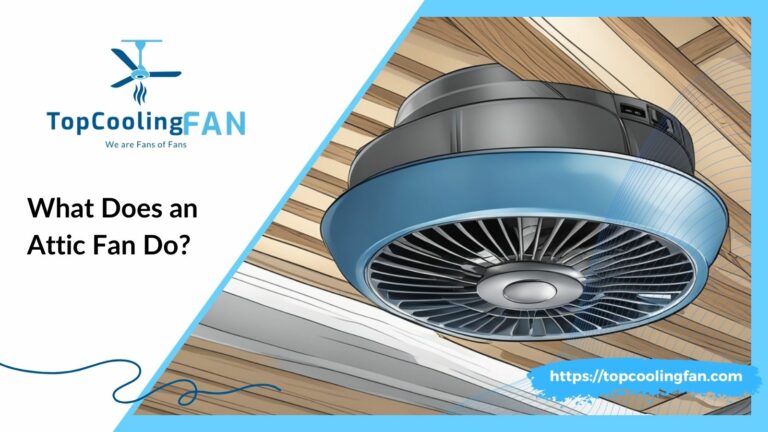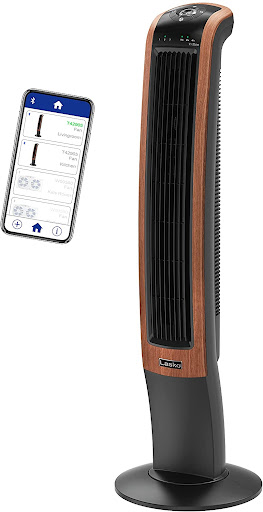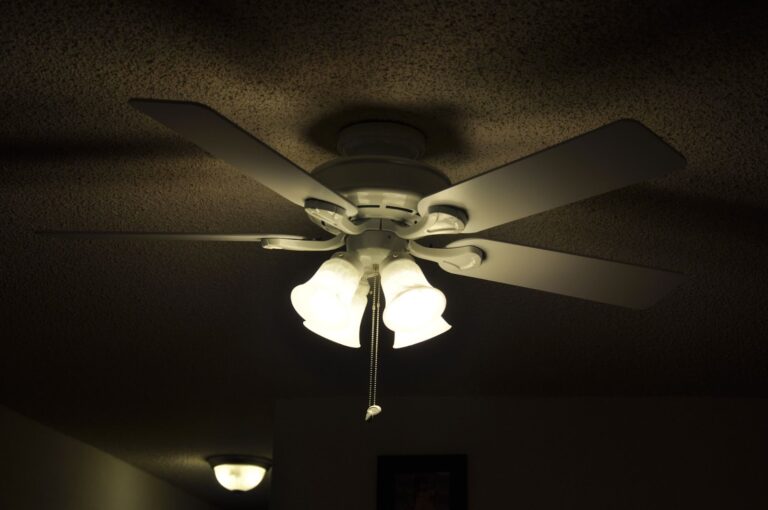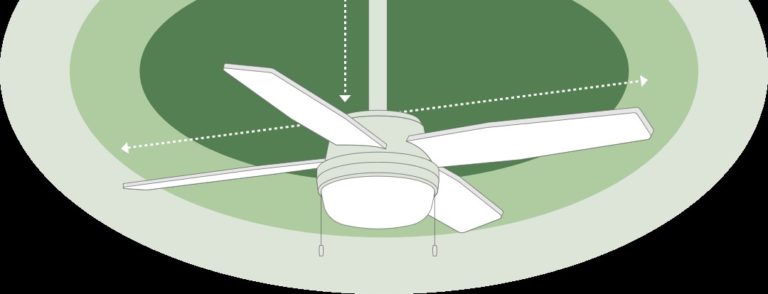Do Tower Fans Cool A Room? Everything You Need to Know
Summer, as we know, is the perfect time to enjoy the sunshine and go beach-hopping. But the sun can sometimes pose a slight problem with its heat.
Excess heat can make people uncomfortable, causing fatigue or heat strokes. As a result, people often turn to temperature cooling equipment like air conditioners, ceiling fans, or tower fans during these times.
In this article, we will discover how tower fans deliver fresh air into your living space in just a few minutes, ensuring a comfortable and breathable environment.
Please sit back and read through as we take you around the realm of tower fans.
How Do Tower Fans Cool A Room?
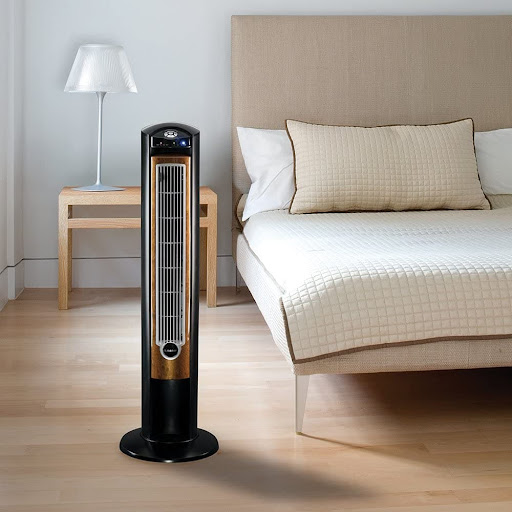
A circular barrel is housed in a tower fan. The fan’s rotor blades are housed within this cylindrical construction, which rotates with the help of an electric motor.
The impeller rotors set the air in motion within the blades of the tubular container, which begin to spin. The air is subsequently pushed toward the fan’s vents.
Unlike a traditional fan, which cuts the air, a tower fan moves the air vertically. After traveling from an inbuilt vent, the air is supplied to an air guide before being blown out. The air compressor uniformly blows the air, dispersing it across your room.
What is A Tower Fan, and How Does It Work?
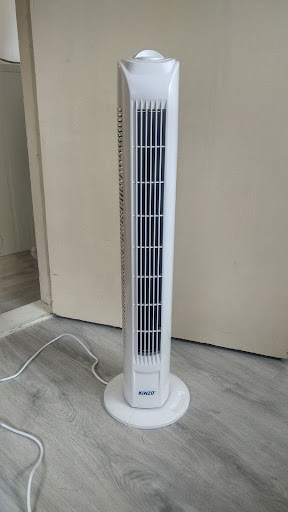
A tower fan sometimes referred to as a bladeless fan, is a compact air-cooling device with limited dimensions. The gadget oscillates from left to right, ejecting hot air from the back and blowing fresh air from the front.
Compared to air conditioners, this gadget has a distinct feature in that it cools the environment while consuming less electricity. As a result, these gadgets are incredibly energy-efficient, significantly lowering your electrical expenses.
Tower fans are easy to handle due to their compactness and mobility.
These fans are much handier when compared to standard electric fans because they take up very little space. This device sits in any place in your room and occupies a minimal amount of space.
What are the Benefits of A Tower Fan?
Tower fans have some features that are not there seen in ceiling fans.
- Several fans have a dispersion filter, allowing air cleaning and cooling simultaneously.
- The fans filter the air from the inside and blast it out the front vents. A few devices come with an air ionizer.
- An ion generator, in essence, rejuvenates air molecules and aids in removing airborne bacteria.
- The inclusion of an ionizer can benefit people who suffer from seasonal allergies.
- The airflow produced by tower fans is substantially more widespread because of its taller, tower-like shape.
- it’s a lot more beautiful and aesthetic compared to huge air-conditioning units.
General Features of Tower Fans
Several types of tower fans include helpful features, such as a convenient remote control. Having a remote control or Bluetooth support is highly suggested if you don’t want to get up from your sofa or bed while chilling.
Compared to the price of an air cooler, tower fans give good functionality for a quarter of the investment.
Thanks to the different speed options, that enable you to adjust the cooling to fit your requirements.
The oscillating function improves the effectiveness of the tower fan by allowing air to be spread across a more significant and broader region.
In addition to the remote control, tower fans include an electrically controlled panel on top.
How to Take Care of Tower Fan Maintenance.
It would be best to examine your tower fan on a seasonal basis. Once, at the commencement of summer and once before finally putting it aside at the end of the season.
Tower/Bladeless Fans Vs. Traditional Fans
A bladeless fan offers several benefits over traditional fans:
- Because it lacks external rotors, it is safer than traditional ceiling fans or table fans because it is at no risk of being cut.
- The structured cylinder makes cleaning easy. A bladeless fan does not accumulate dust as quickly as a traditional fan’s blades do.
- You can use the remote control to operate it. As a result, you won’t have to configure the fan speed manually.
- It is substantially lighter and more compact than a traditional fan. As a result, it may be readily transferred from one location to another.
- A traditional fan’s blades slice the air before approaching you, creating crosswinds and inefficiency. Because a bladeless fan has no external rotors, crosswinds do not occur.
- It’s visually pleasing. These fans are sleek and stylish, with a one-of-a-kind design that will mix in nicely with the furnishings in your space.
Difference between a tower fan and an air cooler.
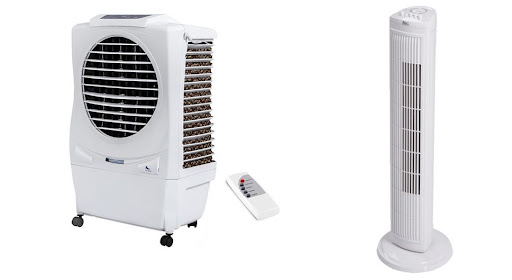
Air coolers and tower fans both provide the same function: cooling. The distinction is seen in the mechanisms of both and their effectiveness.
There are two primary types of coolers: wet and dry.
A tower fan, on the contrary, is made up of a rotor and multiple blades. Rather than chilling the air, fans swiftly circulate it around us, expediting the evaporation of sweat on our bodies and giving us a chill feeling.
Between the two, it is clear that an air cooler delivers far superior cooling than a fan since it generates cold air rather than circulating it.
Furthermore, unlike a fan covering a small portion of the room, an air cooler evenly distributes cool air across the space.
Way’s To Maximize the effectiveness of Tower Fans.
You can improve a tower fan’s efficiency by following a few guidelines. Check out these tips.
- Ensure the equipment is clear of any dirt before using it.
- Modify the fan pitch if necessary to get the proper circulation.
- The filling should not allow any air to travel through it. Inadequate fill installation, fill displacement, or a loose structure around the filling can result in problems.
- Ask the manufacturer if the fill and drift eliminators they supply are up-to-date. Older fill and drift eliminators may be less effective and have a more significant pressure drop than contemporary designs.
- You may be able to substitute open-type fill (timber, fibreglass, etc.) with film fill in some cases (PVC). Considering factors such as temperature, oxygen content, and other variables is essential.
- Remove any obstacles in the cooling tower’s suction or outflow.
- The fans does not have a re-circulation effect. Consider the design of the fan cylinder/stack.
Which is Better? Tower Fans or Conventional Fans/Air Conditioners?
As we know, Tower fans are an improved version of conventional fans overall.
Tower fans have been created specifically for interior design enthusiasts. It is necessary to understand the orientation of such a machine in the room.
According to the suggestions of an interior decorator, they recommend putting a tower fan in the room, hall, or study room. A tower fan is both visually appealing and functional.
Not to mention that tower fans are much more cost-effective and highly portable. But if getting cool air is your only concern and you’re ready to spend, then the conventional options are far better as they are much more powerful.
Conclusion
During the hot summer months, tower fans prove to be a handy cooling companion for your house.
These gadgets not only provide the breeze you need throughout the summer, but they are also less expensive than traditional fans and other air conditioning choices.
The tower fan offers excellent ventilation while being portable and lightweight. These fans have an exciting design and can also disperse air across vast areas.
Tower fans are often more visually appealing than traditional electric fans. They use approximately 35% less power than regular fans.
Furthermore, their bases are often thinner than most pedestal fans, making them an excellent choice for apartment life. They are also available in a multitude of forms and sizes.


